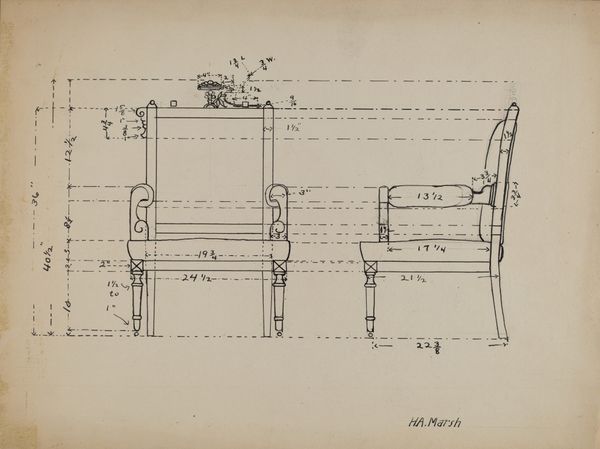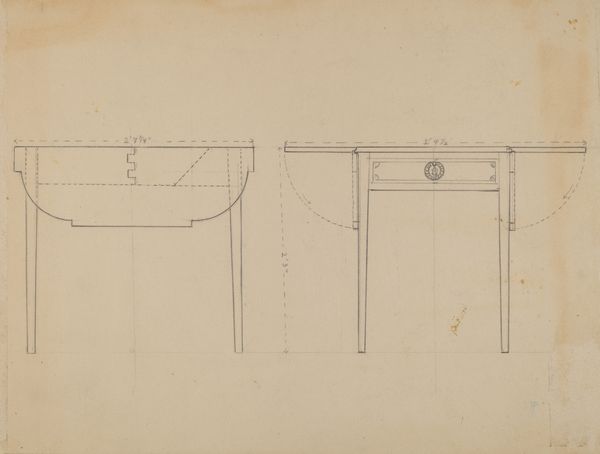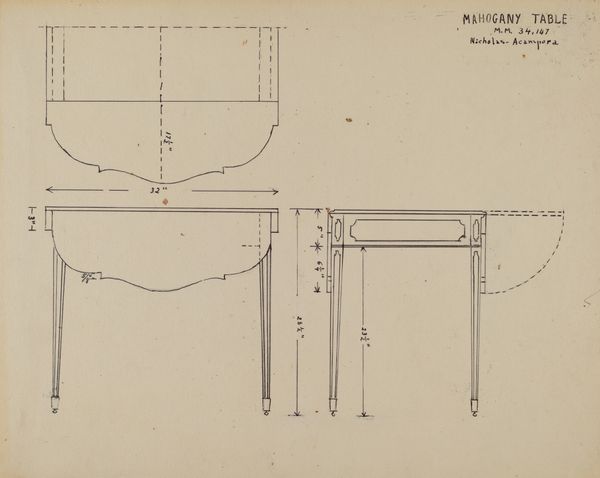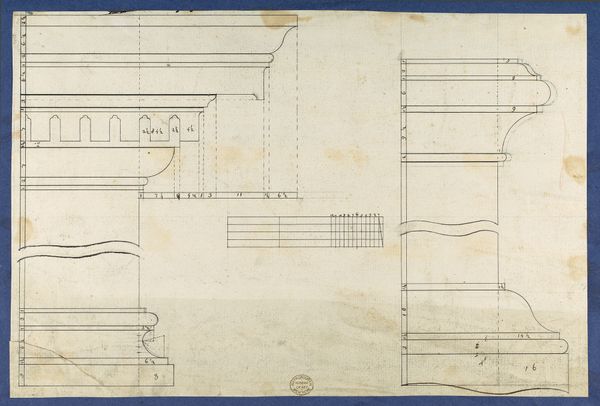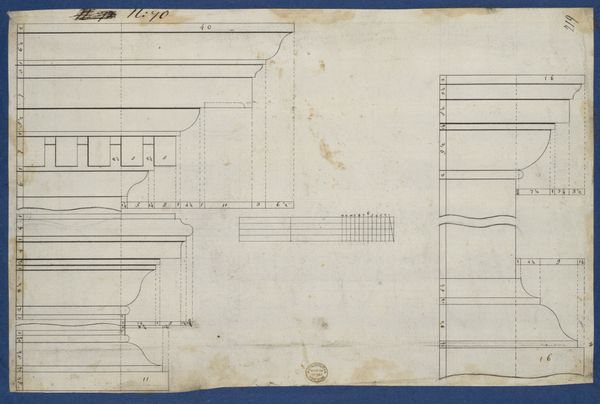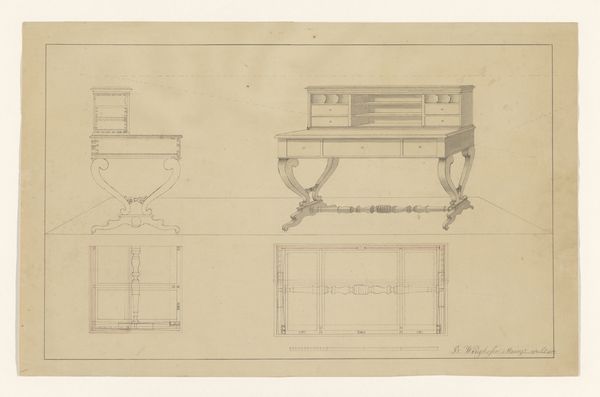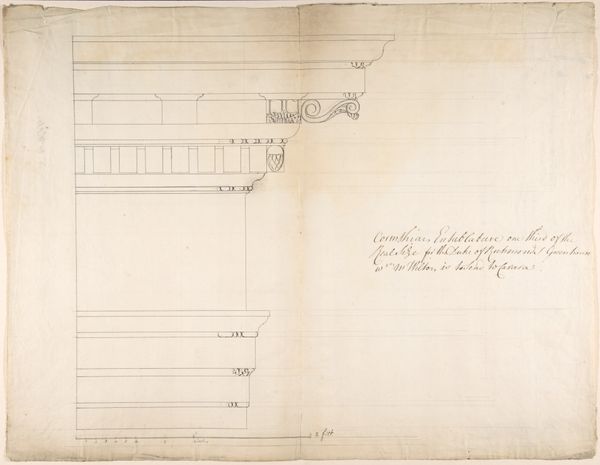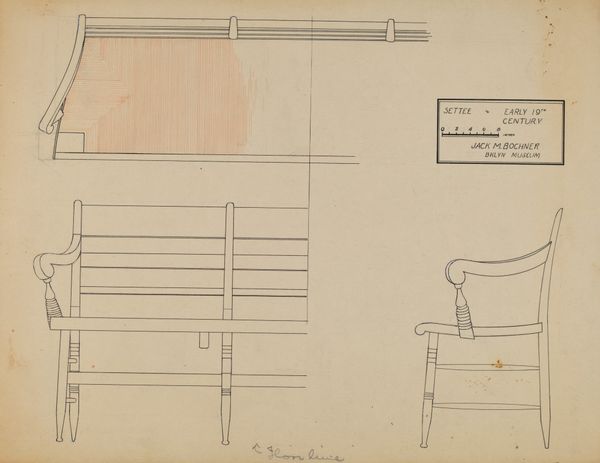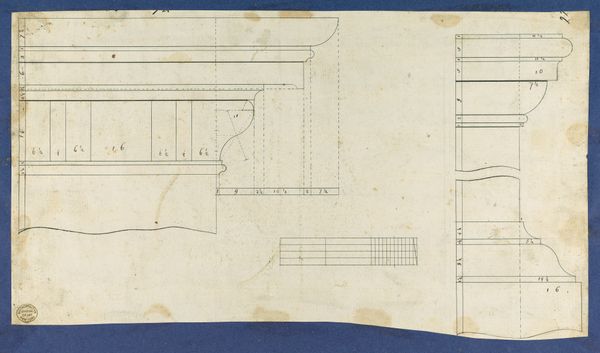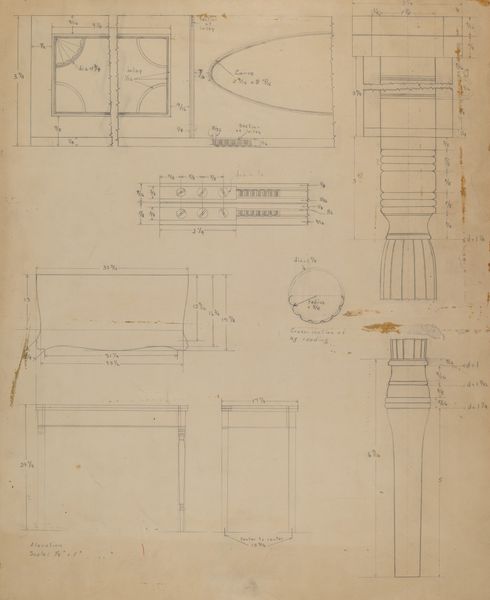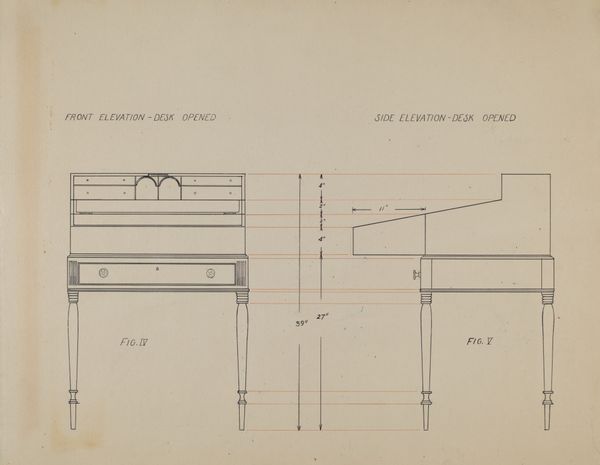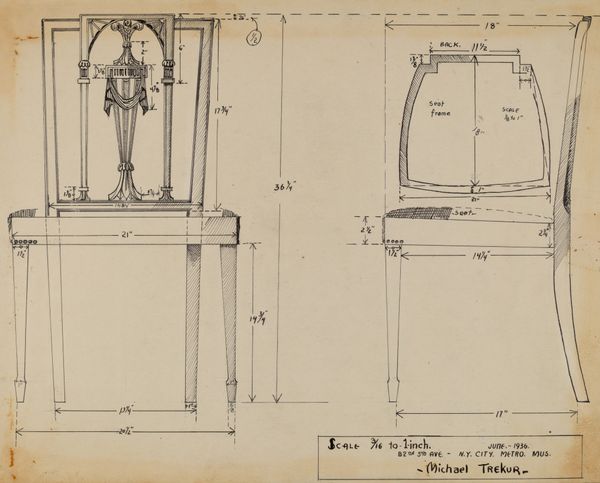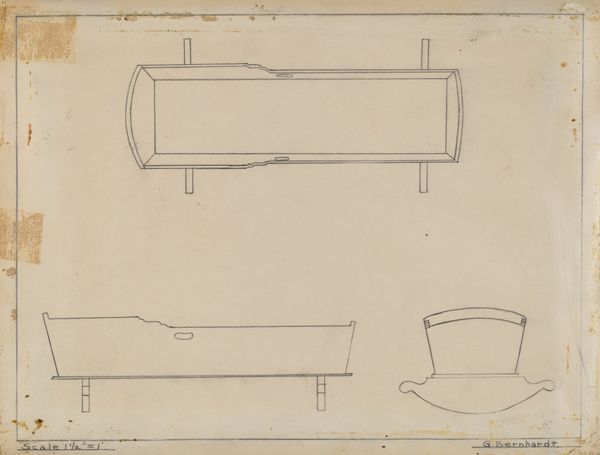
Library Table, from Chippendale Drawings, Vol. II 1760
0:00
0:00
drawing, print, paper, pencil, woodcut, engraving
#
portrait
#
drawing
#
table
#
neoclacissism
# print
#
paper
#
coloured pencil
#
pencil
#
woodcut
#
sketchbook drawing
#
engraving
Dimensions: sheet: 8 1/2 x 13 3/8 in. (21.5 x 33.9 cm)
Copyright: Public Domain
Curator: Ah, the Library Table, a print dating back to 1760 from "Chippendale Drawings, Vol. II", currently residing at The Met. My first thought is the intense labor embedded into each curve. Editor: It does feel a little clinical at first glance, more schematic than evocative. Like seeing the skeleton of what was meant to be a statement piece in some aristocratic home. I mean, this was the height of colonial expansion and transatlantic trade, right? Curator: Absolutely. But I'm more drawn to the process—the pencils, paper, engraving, woodcut involved. The physical making, the intellectual labor translating concept to form. And let’s not forget the societal context influencing the construction itself, who designed, who produced, and what specific materials where being accessed for production. Editor: And where those materials came from and who labored to extract and transport them! Mahogany from the West Indies, implicating the furniture in the brutal reality of slavery. I bet the families commissioning these pieces often ignored that fact when penning abolitionist sentiments. The piece thus encapsulates this hypocrisy, doesn’t it? Curator: Indeed, the finished table speaks volumes about consumption patterns. A site where we grapple with questions of access, materiality, and taste. High art intersects with utilitarian purpose. Editor: And whose purpose? That elaborate design reflects a certain elitism, almost a flaunting of resources. This isn't about mere function; it's about reinforcing social hierarchies. Imagine who would have had access to the library to even utilize the table, how this impacts the intellectual elite, how these are not accident or passive. Curator: I'm struck by the details--ornate drawer pulls, the fluted legs. It’s so much more than a functional design for just placing things on! The paper’s yellowed and stained. The line work appears crisp, especially on a woodcut! Editor: Those visual details can also remind us how deeply enmeshed art like this was within systems of exploitation and exclusion, the historical footprint of those choices can still linger in how the design continues to inform current aesthetics or even political power structures! It can be heavy. Curator: For me, it makes you reflect more on our human relationship with the things we create and consume. Editor: Exactly, we must challenge ourselves to remain accountable to a design’s impact on individuals as a symbol of socio-economic systems.
Comments
No comments
Be the first to comment and join the conversation on the ultimate creative platform.
